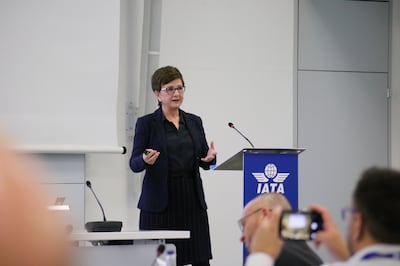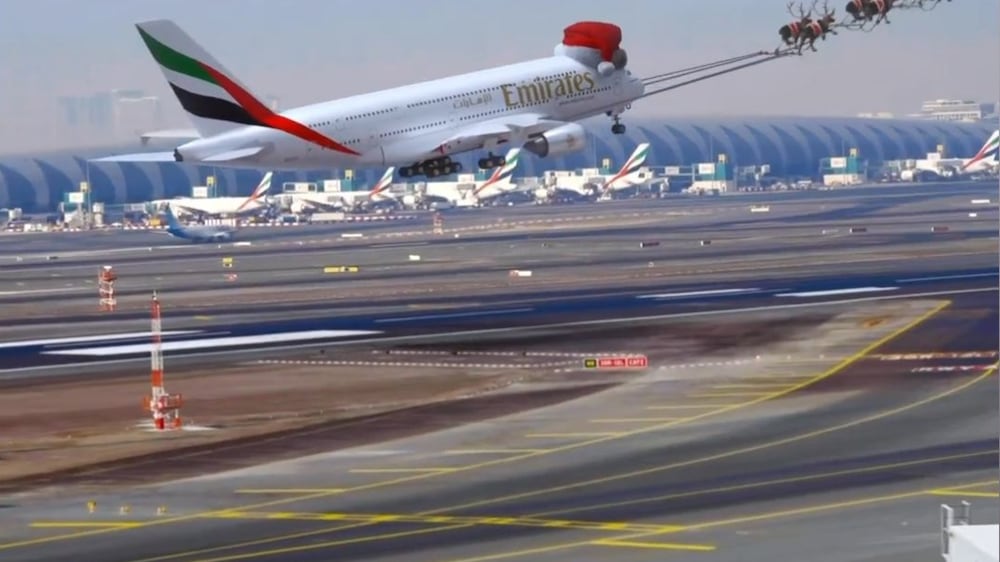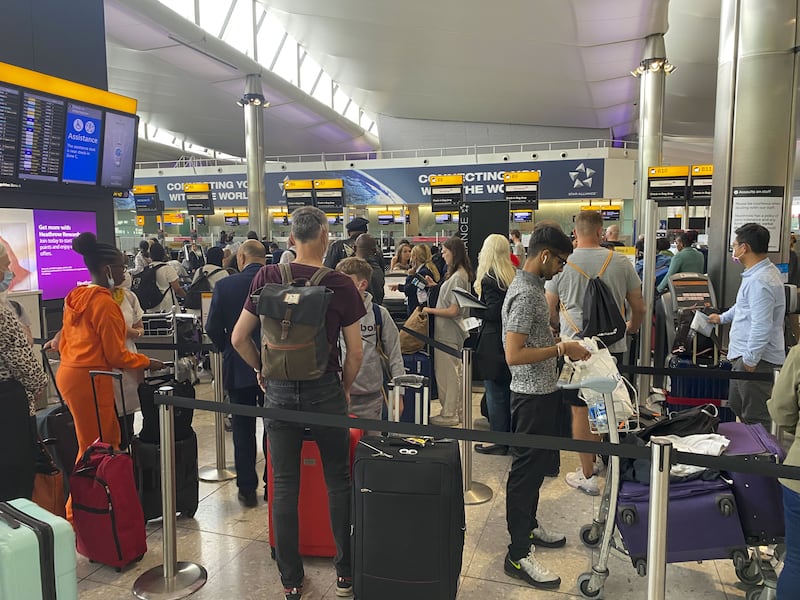The global aviation industry in 2022 charted a flight path to recovery from the Covid-19 pandemic, the worst crisis in its history, with a boom in air travel demand and sky-high airfares as restrictions eased.
Airlines, airports and aerospace companies started hiring at record rates, adding capacity, resuming routes, repairing balance sheets and — for some ― returning to the black after nearly three years of withered earnings.
But the industry now faces tough macroeconomic and geopolitical headwinds that are raising questions on the longevity of the travel boom and the strength of the industry's recovery.
Multidecade record inflation in Western economies, rising interest rates, unfavourable currency swings, higher jet fuel prices and supply chain woes delaying aircraft deliveries are among the challenges facing airlines as they emerge from the pandemic.
The uncertainty of the Russia-Ukraine war and China's continued isolation amid strict Covid policies are additional risks to the outlook.
However, the strong, albeit uneven, recovery is set to continue into 2023 with varying degrees across different world regions, despite these headwinds as travel demand continues to grow and capacity remains constrained, according to industry executives and analysts.
“Broadly, I’m optimistic that seat loads and demand for international travel will hold strong going into 2023. There’s still pent-up travel demand, and capacity isn’t back to pre-pandemic levels yet,” Tim Clark, Emirates airline's president, told The National.
“Plus, there are signs that China, the last major consumer market, is finally reopening. That will also drive demand. For aviation, the theme of recovery will continue in 2023.”
Emirates' A350 enters production in early 2023
Factors such as inflationary pressures, high energy prices and a strong US dollar do impact the cost of business and could potentially dampen consumer confidence and travel spending, Mr Clark said.
“Like everyone else, Emirates is keeping a close eye on costs and working closely with our suppliers. We’re also ensuring that we continue to attract and retain customers, by offering value for money and great travel experiences,” he said.
While economists predict an economic recession in 2023, or at least tough times for businesses, economies and consumers, Mr Clark says there is still reason for optimism next year.
“No matter what, there will always be bright spots and opportunities somewhere … The highs and lows of currencies, interest rates, and energy prices will hurt some, and will benefit some,” he said.
Emirates' global network and agile business model will help the airline reach the “the right markets with the right product mix and offer”, while tapping into the advantages of being based in Dubai, Mr Clark said.
“Dubai and the UAE’s progressive policies, investments, and overall stability are a potent force which will continue attracting businesses, tourists, and trade flows in 2023 and beyond,” he said.
Emirates is preparing to introduce the Airbus A350, a new aircraft type to its fleet mix, with preparation ongoing to take the first delivery of the wide-body jet in mid-2024.
“Preparations are well under way to ensure a smooth entry into service, from training to product development,” Mr Clark said.
“We’ve already completed the cabin design work, with the first Emirates A350 aircraft expected to go into production in early 2023. More details will be unveiled as we get closer to our A350 service launch,” he added.
The airline is “working hard” to return all of its aircraft into service next year, bringing back capacity and the route network to pre-pandemic levels in 2023, he said.
Under a massive $2 billion cabin refresh and retrofit programme for 120 of its existing aircraft that began in November, the first of these newly refurbished jets will roll out of the Emirates Engineering Centre and enter service in January.
Emirates airline and United announce codeshare agreement

Airlines' profitability in 2023
Global airlines will return to profit in 2023 after narrowing losses this year, despite economic headwinds, the International Air Transport Association (Iata) said in its latest industry report in December.
The industry is forecast to collectively earn a net income of $4.7 billion in 2023 — the first time it will return to the black since 2019, when it recorded a profit of $26.4 billion — as passenger demand continues to improve and Covid-19 restrictions ease, it said.
While this is a modest profit, less than one-fifth of 2019 levels, it is still a significant development compared to the staggering loss of about $187 billion that the airline industry suffered during the pandemic from 2020 to 2022.

A 'boomtown atmosphere'
In the Middle East, higher crude prices will provide a windfall for oil-producing economies, which boosts air traffic flows for airlines based in those countries, Marie Owens Thomsen, Iata's chief economist, said in an interview.
“It's obviously a boomtown kind of atmosphere in that region, certainly among oil-producing countries, and much less so in any of the oil-importing countries around the globe, so there's wealth going in that direction and that underpins traffic,” she said.
The Fifa World Cup held in Qatar will also help regional airlines' performance this year, she said.
The region also stands to benefit from the rerouting of flights due to the Ukraine war, with some passengers and cargo being diverted through the Middle East instead, she added.
Globally, air ticket sales will continue to be buoyed by high unemployment, despite high inflation and interest rates, she said.
However, consumers can become “more price sensitive” when unemployment rates start rising potentially in the middle of next year, Ms Thomsen said.
Robust forward bookings
Travel data firm ForwardKeys said the global aviation industry in 2022 is on course to reach 56 per cent of pre-pandemic levels, while Middle Eastern carriers will reach 77 per cent of 2019 levels. This is according to its analysis of global travel in 2022, combining flight arrivals up to October 18 with bookings to the end of the year.
“When it comes to major trends, the most important by far is recovery, as pandemic-related travel restrictions have been progressively relaxed and pent-up demand to travel has been released, helped by a recent revival in business travel and major global events such as the World Expo in Dubai and the Fifa World Cup in Qatar,” Olivier Ponti, vice president of insights at ForwardKeys, told The National.
For the first half of 2023, global flight bookings are currently 25 per cent behind pre-pandemic levels, but Middle Eastern flight bookings are 15 per cent ahead of their 2019 levels, according to ForwardKeys data.
“Looking ahead, mankind’s almost insatiable curiosity and appetite to travel is a cause for long term optimism but it is tempered in the immediate term by a slowing global economy, Russia’s invasion of Ukraine and China’s continued isolation in response to Covid-19,” Mr Ponti said.
Reindeer take off with Emirates flight at Dubai airport

Dubai Airports, operator of the world's busiest hub by international traffic, downplayed the risk from a looming recession on travel demand.
“We have to project with confidence that we have a bright future in this industry. We have a very desirable product, we have to work very hard and very quickly on sustainability. If we can crack that particular problem and offset as much as we can of the carbon footprint that we generate then the future of aviation as the sole practical way of long-haul travel is pretty secure,” Paul Griffiths, chief executive of Dubai Airports, told The National.
“I am very confident in the demand remaining robust, in our ability to keep improving the level of customer service we operate and hopefully also to provide the additional capacity necessary to cope with the growth that the industry will deliver,” he said.
“You'll probably see that travel, certainly for the next 18 months, will ride out some of the recessive trends you'll see in other industries,” Mr Griffiths said.
“Flight prices are likely to fall as more capacity comes on, which is good news for consumers.”
There will be an “equilibrium” between travel demand and available capacity, making air fares “more reasonable”, but increased costs and inflationary pressures means these prices are unlikely to return to pre-pandemic levels, Mr Griffiths said.
“Overall, I am pretty confident that this industry will continue to grow and attract more and more customers.”
Bracing for risks ahead
While next year will bring “strong headwinds” from high jet fuel prices to reduced consumer spending, “airlines are not seeing this feeding through to bookings currently but it really is very early days” to determine the impact on overall travel demand, London-based independent aviation analyst John Strickland said.
Some economies have bounced back to 2019 growth levels and seat capacity in some markets can be “relatively tight” due to aircraft retirements and jet delivery delays, which would benefit the bottom lines of some airlines, he said.
However, some analysts have warned about the risks ahead for airlines' growth from the after-effects of the pandemic and slowing economic growth.
“While 2023 will see a further return of air demand, the growth line will shallow and there will be a bite in the tail,” Richard Maslen, head of analysis at the Capa Centre for Aviation, said.
“Although the capacity-demand balance is out of kilter — in the benefit of airlines — it may not be enough to save some from closure in what could be a cold, dark winter.”
The risk of a recession could affect passenger and cargo demand, although this will probably come with some mitigation in the form of lower oil prices, Iata said.
The outlook anticipates a gradual reopening of China to international traffic and the progressive easing of domestic Covid-19 restrictions from the second half of next year. However, prolonged isolation policies would adversely affect the outlook, Iata said.
Proposals to increase infrastructure charges or taxes to support sustainability efforts could also eat away at profitability next year if these ideas materialise, it said.







